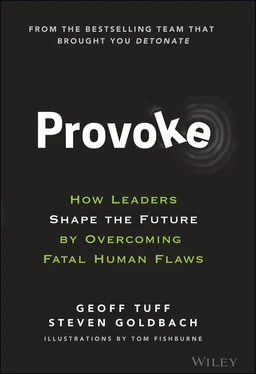Before getting into this any further, let’s just be clear – we are going to devote a fair bit of Chapter 2 to the behaviors around, well, Number 2. Why must we talk about something that makes everyone just a slight bit uncomfortable? This was the best example of something that literally everyone must do, and, as it turns out, there were many new and interesting ways people dealt with the potential shortage. And new and interesting human behaviors are the building blocks of opportunity.
In one instance, we saw consumers leverage technology to make the sharing of toilet paper simpler. One such instance was captured on film in San Francisco, the technology hub of the world, where a person flew a drone to a friend who was in need. (It's worth the reading break to watch the video here: https://mashable.com/article/drone-delivery-toilet-paper-san-francisco-coronavirus/.) Could you imagine this as a business at scale? Instead of ride sharing, imagine a local TP sharing service with delivery-on-demand via drones. Maybe not. In another instance, we saw South Carolina police handing out toilet paper instead of tickets as a gesture of goodwill at the start of the pandemic. 1
As it turns out, though, the need for actual toilet paper is not the issue. It's the fear of being without toilet paper that leads to hoarding behavior. We wish we could say we were “enlightened consumers” and didn't hoard, but we'd be lying. We freaked out, too. Steve did the grocery shopping in his household during the pandemic (a behavior that stuck as the initial lockdowns lifted) and was instructed to buy whatever toilet paper he could find on every trip. His family ordered commercial-grade toilet paper with a delivery date of six weeks out, just in case. They even ordered a brand of wet toilet paper they could find online for quicker delivery: “Dude Wipes.”
In times of dramatic change, humans are known to change habits, which can lead to permanent behavior change. At the time of writing, it's not yet clear what new habits will stick once we emerge from the pandemic, but it is clear that many longstanding habits will be challenged. A greater proportion of people will certainly be able to work remotely on a more frequent basis, even when there is return to office work. People will likely pay more attention to frequent handwashing. And maybe people will continue to make sourdough regularly at home.
Habits are a critical underpinning to businesses. Think of all the brands that you buy all the time without thinking – including, most likely, your brand of milk, your laundry detergent, and your deodorant. You probably have a habit around your morning coffee, whether you make it at home, pick it up at a basic local coffee shop, or pay premium prices from national retailers. And, until you read this last paragraph, you probably didn't think about it much. 2
During the pandemic, many of these habits were challenged. For both of us, used to getting “our coffee on the outside” (to quote another Seinfeld line), we had to adapt during the lockdown. Geoff returned to getting his coffee on the outside as businesses opened up, while Steve is more than happy to continue to brew his own, having become proficient at making coffee with a French press. As sticky as they are, when habits do change, they impact businesses considerably.
So, given the magnitude of the challenge, did we see a shift in the market for toilet paper or substitutes? As it turns out – yes! A small group of consumers made the decision to no longer be beholden to toilet paper supply. They installed bidets in their homes.
Lest we be accused of only paying attention to the U.S. market, we should acknowledge that bidets are commonplace in many countries around the world, even mandatory. In Italy, for example, a 1975 hygiene law requires bidets to be in at least one household bathroom. In Asia, a company named Toto brought bidets into the digital age with electronic control panels and became a staple in Japanese homes. And then in March 2020, sales of bidets rose dramatically in the United States. Some companies saw sales peak at more than 10 times normal volume. 3
The critical question this raises – for paper supply companies, for white goods manufacturers, and for consumers looking to move when prices are right – is whether this shift is a one-time blip in sales or a more permanent trend toward the use of bidets among Americans.
Let's leave the bathroom behind for a moment and generalize the concept that we are going to examine for the remainder of the book. Broadly, there are two phases of any trend, each characterized by the nature of the uncertainty around the trend. In the initial “if” stage, it's still uncertain if the trend will come to fruition; in the “when” stage, the trend has progressed, gathered momentum, and crossed an important inflection point where it's no longer uncertain whether it will come to fruition. It's only a question of when and, sometimes, to what extent.
Our core hypothesis for this book is that once an “if” becomes a “when,” the nature of a leader's response must change. The opportunity is to focus on the moves you can make that will shape the trend to create a better future – one where your organization is advantaged.

The “if-to-when” shift is, as we wrote in the Introduction, similar to a rollercoaster. That big initial climb as a cable pulls the car up the hill is the “if” stage. The rollercoaster cars are building up a ton of potential energy, and if they stop, they might just slide backwards. But when the cars get to the peak and start to tip, that potential energy becomes kinetic and the momentum takes the cars through loops, twists, and turns, seemingly with a life of their own. Once you hit that inflection point, the “when” stage kicks in. During this transition – something we call the “phase change” – the critical question is how long it will take for the trend to resolve into inevitability.
While it's impossible to be exhaustive about all the mechanisms that might be at play in moving from “if” to “when” (human behavior is admittedly more complicated than the physics of rollercoasters), we like to lean on something from the world of design-driven innovation called the “Balanced Breakthrough Model.” The basic notion behind this model is that a “balanced” innovation that has more likelihood of succeeding in the market will simultaneously build in aspects of desirability (the market wants it), feasibility (the innovator can produce it), and viability (the innovator can eventually make money from it). Similarly, a trend that seems headed in the direction of checking all three of these boxes has a much higher likelihood of passing through the phase change to “when” than other, less robust trends. 4
The most critical aspect of desirability is the degree to which the trend has an unequivocally better outcome than the current state. If the endpoint of the trend is better for all customers on every dimension relative to what exists today, then it's only a matter of when it will take off. That assumes it is or becomes feasible and someone figures out the right business model to make money from it … but we're strong believers in almost anything being possible if the right demand conditions are in place. If the improvement is only marginal or only meaningful to a small proportion of the population, then feasibility or viability needs to be off the charts – likely via a cost advantage – since it offers less potential economic reward.
Consider the cord-cutting example from Chapter 1. The main benefit of cord cutting is that you get to watch the shows you want to watch, when you want to watch them. When compared with the need to conform to someone else's predetermined schedule, it is unequivocally better to have the flexibility to watch your show on your time. Even if by some amazing coincidence you wanted to watch the shows at the exact time that all the networks scheduled them, you would be no worse off than before. In this case, there is no uncertainty around the trend's desirability. Cord cutting is clearly better for consumers, so the question is whether you can overcome the feasibility and viability barriers.
Читать дальше













